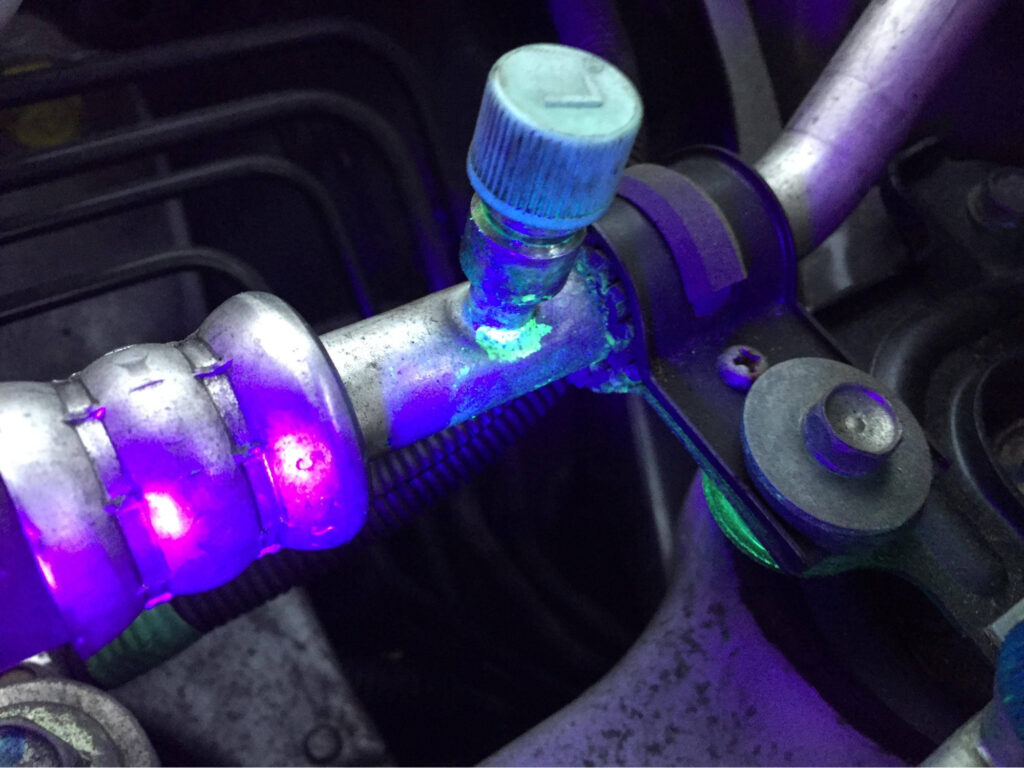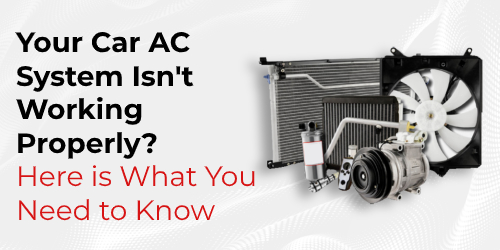Imagine that it’s already a scorching heat outside and you are stuck in the traffic. While already in the struggle, you find that your Car AC isn’t blowing cold air. Doesn’t it feel like you have met with a hot gust? Well, if you are scouring the internet for reasons why your AC is not blowing cold air, then this article is meant for you.
One of the most common reasons is the lack of refrigerant that needs to be refilled after some years. Other than this, the possible reasons could be leakage, a blocked condenser, or faulty fan motor. Before we head directly on the possible causes in detail, let’s first learn about the working of the car AC system.
Working of AC System

An AC system comprises a condenser, a compressor and a clutch, a drier, an evaporator, and a blowing fan. Here is the process of how the AC system works in your car.
- The cooling starts in a compressor in the gaseous form. The clutch engages with the compressor when the AC is turned on. The compressor then raises the temperature of the refrigerant, sending the pressure to the condenser which further cools down the gas, converting it into the liquid state.
- This liquid is passed on to the receiver drier for the removal of the other harmful contaminants. The desiccant absorbs the moisture.
- Before reaching the evaporator, the liquid refrigerant is converted into the gaseous state once it passes through an expansion valve or orifice tube.
- The evaporation works opposite to the condenser. It absorbs the heat and completes the process by cooling down using the AC blower fan.
- The refrigerant gets back to the AC compressor in the gaseous form, and the process repeats itself.
Now that you are aware of the process of the working of the AC system and its components, let’s learn about the most common reasons when a car’s AC doesn’t blow cold air.
Car AC Not Blowing Cold Air?
- Lack of Refrigerant:
The AC might not be able to throw the cold air because of a shortage of refrigerants. It usually lasts for a few years. It would be best if you refill it timely.
Things required:
Filling can be done through the AC manifold gauge. Even if you don’t have it, you can still complete the process, but that would lead to either more or less filling in the compressor. The other thing that is required is a can of refrigerant.

Process:
- Start the engine and turn AC on max.
- Attach the gauge to the low-pressure port, denoted as “L” Shake the refrigerant and then attach it to the other end of the indicator that might be featured as a gauge or trigger. Shake the can and release the refrigerant, taking care of the level.
- Fill the gauge till its optimal range and then after disconnecting and replacing the low-pressure cap, check for cold blowing air.
- After recharge, AC should blow cold air. In case, the problem persists that means there is some other issue in the system.
- Refrigerant Leak:
Leakages are tough to track as they are instantly evaporated. They can be found in the seal, cracked hose, gaskets, or compressor.
Leakage Signs:
- Hearing an audible click when AC is turned on.
- Hearing hissing sound from the system when AC is off.
- Residue around the pipes and AC hoses.
- Frequent ON/OFF cycle of the AC system.
How to check for refrigerant leakages:
- Fluorescent Dye: Add a small amount of UV leak detection dye, while making sure that refrigerant is full. Let it stay for a week and then analyze your car AC system with a UV light. Check for fluorescent yellow or green leakage.
- Water and Soap: After making sure that the refrigerant is full, spray the soapy solution around the different components of the AC system. Run the AC on max and check for bubbles.
AC Leak Sealer:
A liquid that comes in a compressed can that connects to the low-pressure port. Once it encounters a leakage point, it seeps out and forms a seal. Besides its benefits, it can also cause some issues like clogs in the drier or decreased AC performance.

- Clutch Failure:
There is a clicking sound that follows cold air when the AC is turned ON. Sometimes it stems out of other issues like a faulty compressor or blown out fuse, but usually, it’s the clutch.

Unfortunately, replacing a compressor clutch is somewhat complicated where a professional is recommended.
- Blocked or Broken Condenser:
As now you are already aware of the significance of the condenser, you know that the vital process would remain incomplete. Any clogs or faults won’t let the refrigerant convert from gas to liquid.
Signs:
- The blockages usually result in howling or rattling sounds from the condenser.
- The lack of pressure also sometimes causes a clunking noise.
How to deal with the problem
- It doesn’t require removing or dismantling the condenser for the removal of the blockages. There are AC system cleaners that help in flushing out all the clogs.
- Sometimes you need a new condenser.

- Fan Motor Failure:
Fan moors not only disperse the cold air but also cools it. The non-functioning of the fan motor won’t allow AC to operate appropriately.
- Signs:
- Air stops or doesn’t come out entirely from your vents.
- Overheating engine
How to determine the issue:
Resolving the subject through visual inspection is the best way. You need to look for the cracks or debris that obstruct the circulation. If you find none of these issues, then it clearly states that there is some electrical problem.

- Compressor Issues:
The system lacks the pressure to send it to the condenser when there are AC compressor issues. Most of the faults in the compressor arise when you let it sit for long without using it.
Signs:
- No cold air blowing out of vents
- Loud squealing or grinding noises while AC is running
- Clutch issues
Faulty compressors usually involve complicated issues. It is recommended to get it replaced rather than getting it repaired.
AC Repairs
It isn’t delightful and also time and cost consuming to drive a vehicle that needs repairs, especially when it is regarding the car AC system. It is indeed a vital part of a car, and when you don’t get cold blowing air, you need to get it to shop for repairs. AC repairs involve:
- Inspection & Diagnosis
- Refrigerant refill
- Minor repairs like cleaning, leakage fixation, clogs removal, or clutch replacement
- Major Repairs like getting new condenser, compressor or fan motors.

You need to handle the issues with your AC system promptly instead of neglecting as it could cause more severe problems. So why take the risk? You can check by yourself, and if there is no major issue, you can get it fixed by yourself. You can get AC system parts at The Auto Parts Shop. So don’t suffer in heat! Diagnose it, resolve it and enjoy your every drive.
